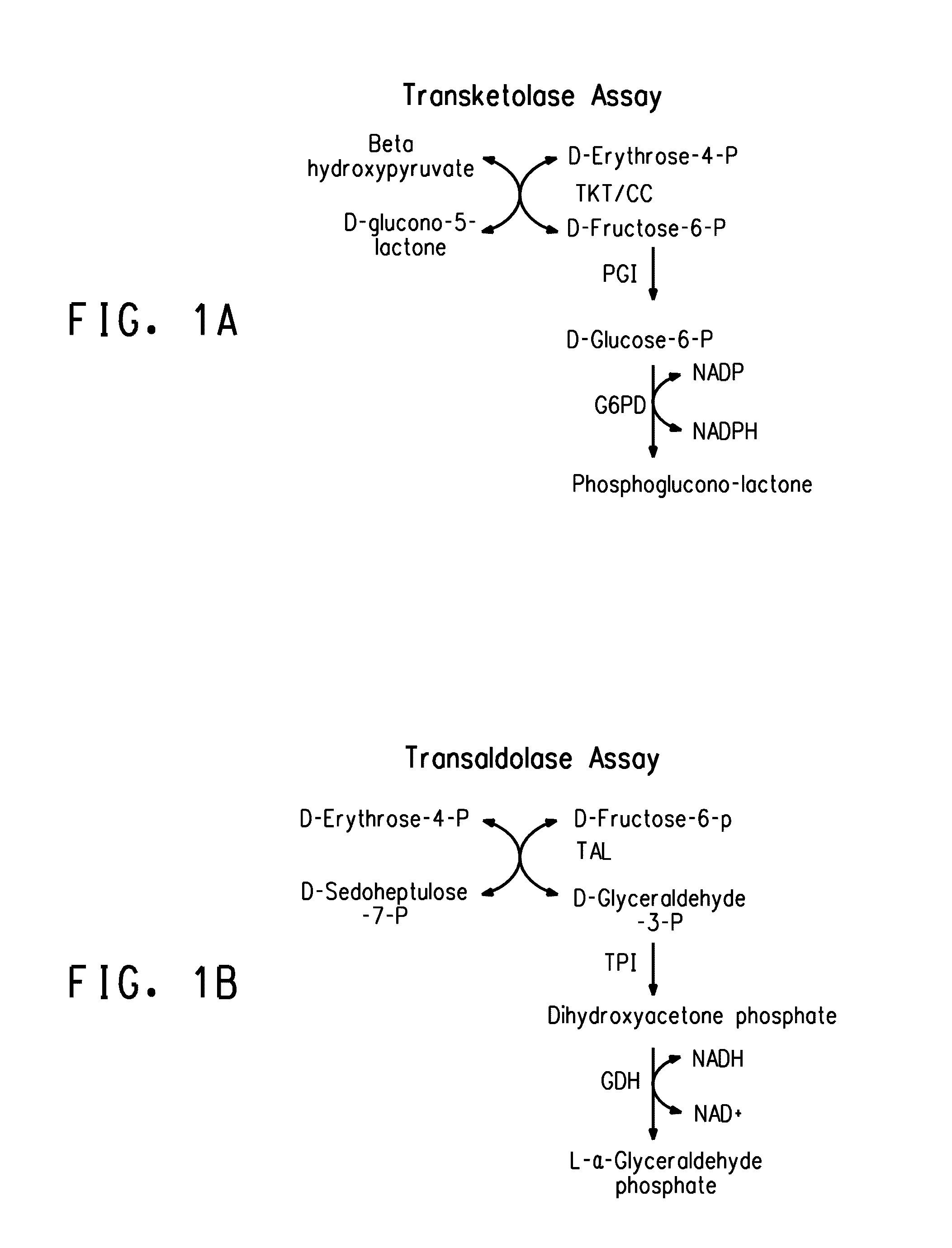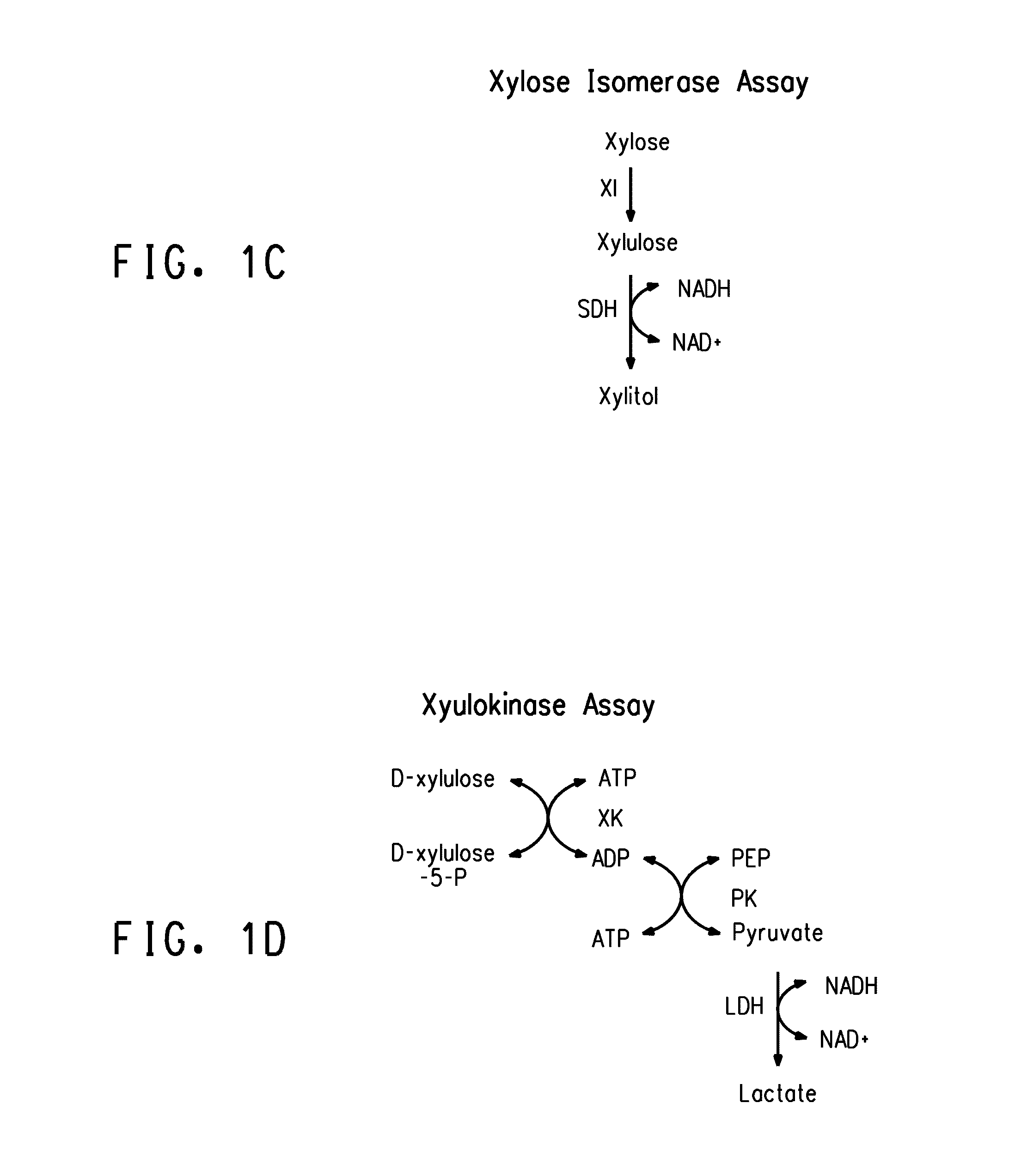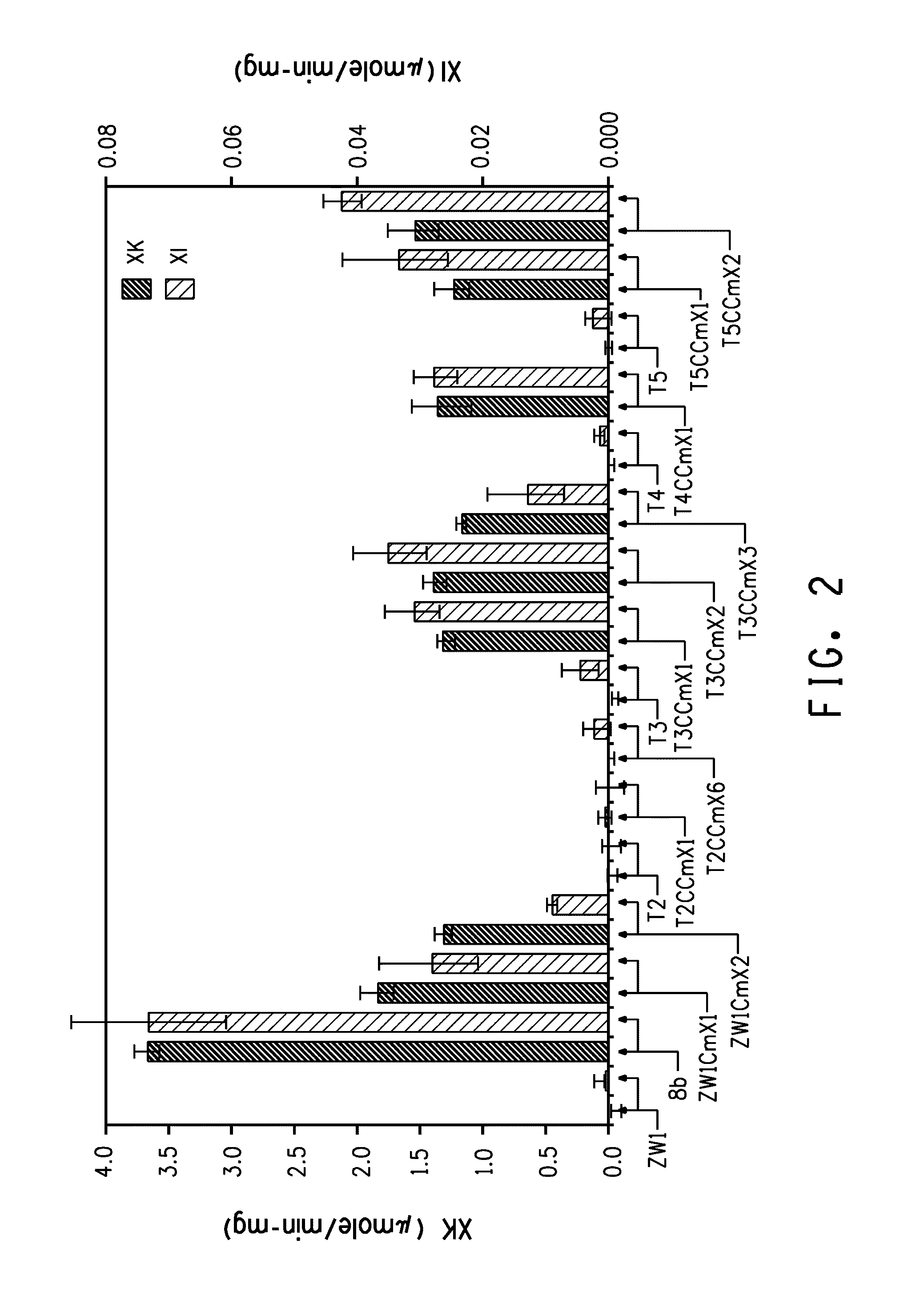High expression Zymomonas promoters
a zymomonas promoter and high-expression technology, applied in the field of microorganisms and genetic engineering, can solve the problems of engineered strains that do not grow and produce ethanol, and achieve the effect of improving the growth and activity of xylose-utilizing zymomonas
- Summary
- Abstract
- Description
- Claims
- Application Information
AI Technical Summary
Benefits of technology
Problems solved by technology
Method used
Image
Examples
example 1
Construction of Xylose-Fermenting Zymomonas mobilis Strains
[0114]As described in commonly owned and co-pending U.S. App. Pub. No. US20080286870, strains of xylose-fermenting Zymomonas mobilis were constructed by integrating two operons, PgapxylAB and Pgaptaltkt, containing four xylose-utilizing genes encoding xylose isomerase, xylulokinase, transaldolase and transketolase, into the genome of ZW1 (ATCC #31821) via sequential transposition events, followed by adaptation on selective media containing xylose. Previously, a xylose-fermenting Zymomonas mobilis strain called 8b was constructed, as described in U.S. App. Pub. No. 20030162271, by integrating the two operons PgapxylAxylB and Penotaltkt, along with selectable antibiotic markers, into the genome of Zymomonas mobilis 5C via a combination of homologous recombination and transposon approaches followed by adaptation and NTG mutagenesis. In the preparation of new strains, transposition (Epicentre's EZ::Tn in vitro transposition syst...
example 2
Adaptation and Selection of Strain ZW658
[0128]As described earlier, adaptation of the initial ZW1::PgaptaltktPgapxylABCm strains on RMX at 30° C. greatly improved the growth of strains in these conditions. However, the adapted strains suffered a long lag during growth and fermentation in RMX (6%) at 37° C. To further improve the integrants for xylose fermentation at preferred process conditions including higher sugar concentration and temperature, the evolutionary or adaptation process was continued in RMX (5%) at 37° C. Serial transfers were conducted and the best growers were selected. Integrants used in this process included X13aC, X13bC, X13cC, X26C and X13FLC. These 5 strains were grown in RMX at 30° C. for 6 transfers before being transferred to RMX (5%) at 37° C. for another 5 to 16 transfers. During and after all the transfers cultures were streaked on RMX plates and incubated at 37° C. to isolate single colonies. Large colonies were further streaked on RMX plates and incuba...
example 3
Assay of Pentose Phosphate Pathway Enzyme Activities
[0132]The activities of the four xylose utilization enzymes encoded by integrated genes (described in Example 1) were measured as described in the General Methods for three of the strains selected for adaptation at high sugar and 37° C. (of Example 1) and were compared to activities of the same enzymes in the further adapted strain ZW658 (of Example 2). The results, expressed as μmoles product / mg protein / minute are shown in Table 1.
[0133]
TABLE 1Enzyme activities in different xylose-utilizing adapted Z. mobilis strainsXyloseStrainisomeraseXylulokinaseTransaldolaseTransketolaseX13bC0.033 + / − 0.0131.15 + / − 0.131.66 + / − 0.50.22 + / − 0.02ZW658 0.25 + / − 0.0334.41 + / − 0.212.67 + / − 1.00.19 + / − 0.05
[0134]The activity levels for both members of the xylAB operon were increased by about 4 to 8 fold in the further adapted strain ZW658 as compared to levels in the partially adapted precursor strains. There was little or no change in the expressio...
PUM
 Login to View More
Login to View More Abstract
Description
Claims
Application Information
 Login to View More
Login to View More - R&D
- Intellectual Property
- Life Sciences
- Materials
- Tech Scout
- Unparalleled Data Quality
- Higher Quality Content
- 60% Fewer Hallucinations
Browse by: Latest US Patents, China's latest patents, Technical Efficacy Thesaurus, Application Domain, Technology Topic, Popular Technical Reports.
© 2025 PatSnap. All rights reserved.Legal|Privacy policy|Modern Slavery Act Transparency Statement|Sitemap|About US| Contact US: help@patsnap.com



